7 Species of Woodpeckers in Kentucky (With Pictures)
Last Updated on
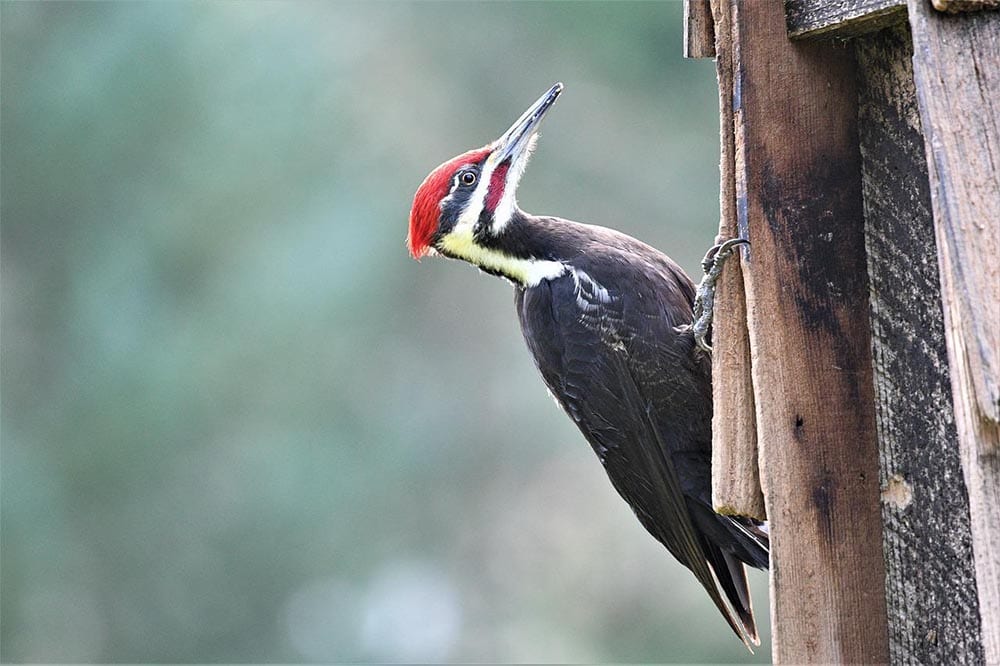
If you’re looking to spot a few woodpeckers in Kentucky, you’re in luck. There are seven different species of woodpeckers in Kentucky, and all but the yellow-bellied sapsucker are year-long residents!
But what do these woodpeckers look like, how do you spot them, and how do you identify them once you see them? We answer all those questions and more for you here, as well as give you a few tips on how to attract them to your suburban backyard!

The 7 Species of Woodpeckers in Kentucky
1. Downy Woodpecker
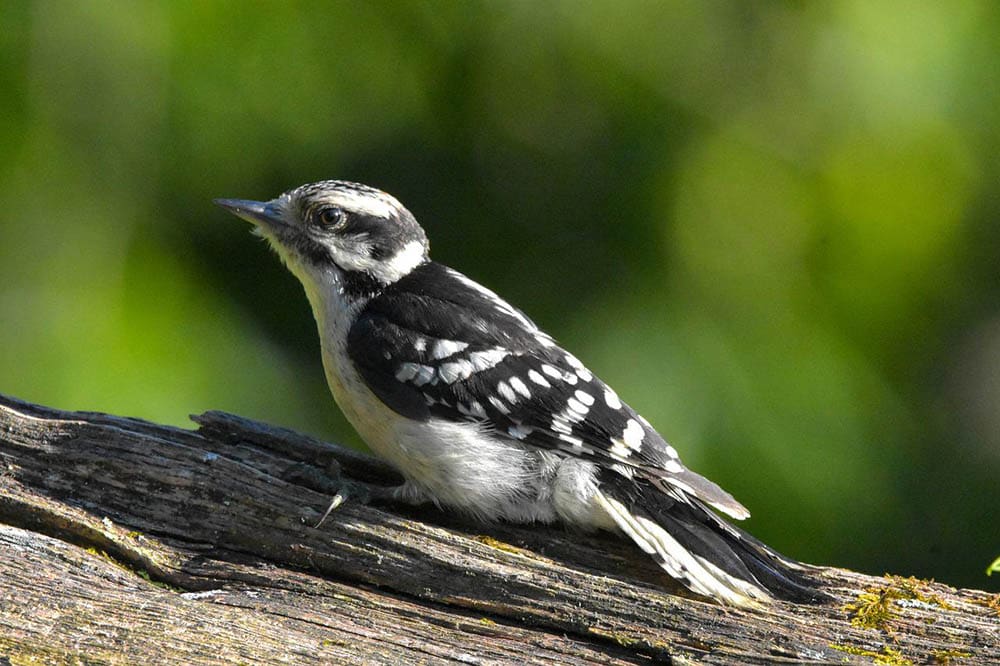
| Population: | 14 million |
| Wingspan: | 10 to 12 inches |
| Weight: | 0.75 to 1 ounce |
| Length: | 5.7 to 6.7 inches |
The downy woodpecker is one of the most likely woodpeckers that you’ll spot even if you don’t plan on heading out to any forests. While the downy woodpecker thrives in deciduous forests, they’ve also adapted to life around humans.
Therefore, they’re often found in suburban backyards and parks. Keep an eye out if you have mature trees that lose their leaves during the fall. If you do, there’s a good chance that a downy woodpecker or two might make an appearance, especially if there’s a readily available water source nearby.
2. Hairy Woodpecker
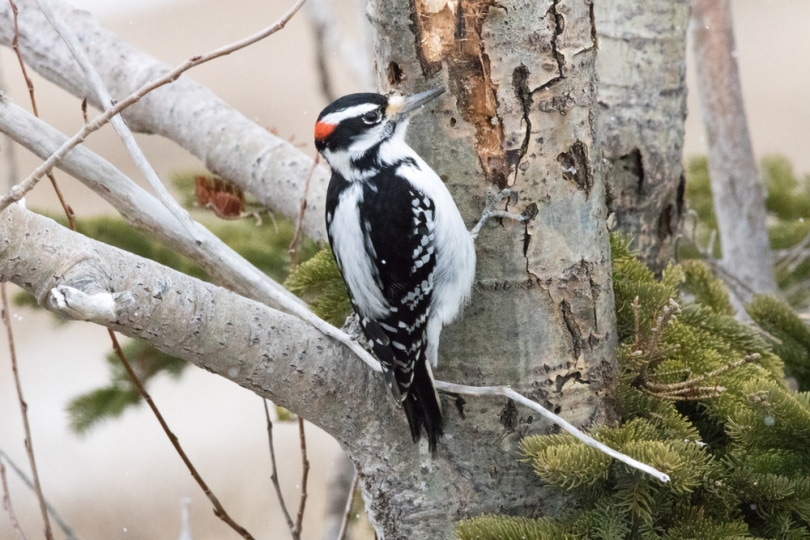
| Population: | 9 million |
| Wingspan: | 15 inches |
| Weight: | 1.5 to 3.5 ounces |
| Length: | 9 to 11 inches |
The hairy woodpecker looks almost identical to the downy woodpecker, but two different features can help you tell them apart. First, the hairy woodpecker is a bit larger than the downy woodpecker.
Second, the hairy woodpecker has a longer beak. You can also see the hairy woodpecker in suburban backyards, and they’ll commonly eat from feeders. However, you still won’t find them if there aren’t more than a few mature trees around.
3. Northern Flicker
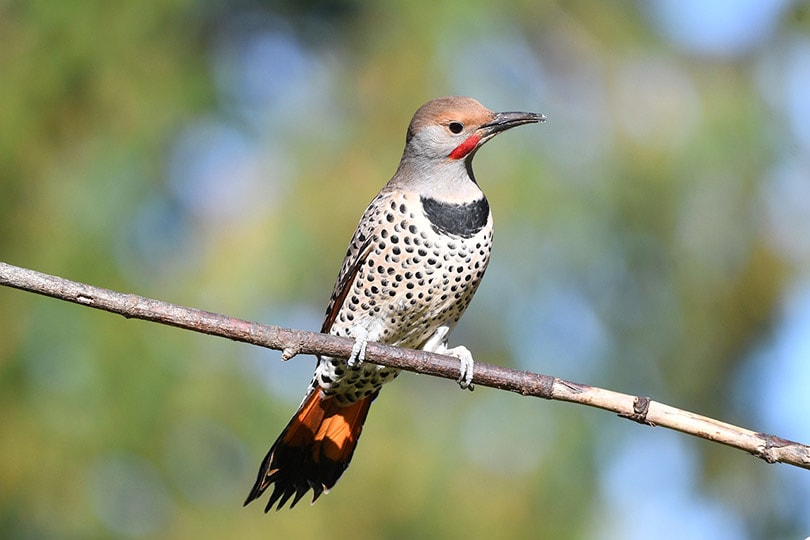
| Population: | 16 million |
| Wingspan: | 16.5 to 20 inches |
| Weight: | 4 to 5.5 ounces |
| Length: | 11 to 12.2 inches |
The northern flicker might not have “woodpecker” in the name, but they’re a woodpecker nonetheless. In Kentucky, you’re far more likely to spot a yellow-shafted northern flicker. They have red on the back of their head and yellow wings that you can only see when they’re in flight.
Northern flickers prefer old, rotting trees, and they’ll eat mostly from the ground. Their favorite food is ants, but they’ll also eat berries and other vegetation that they can find. While they don’t hang out in trees that often, they do drum on trees to communicate with each other.
4. Red-Bellied Woodpecker
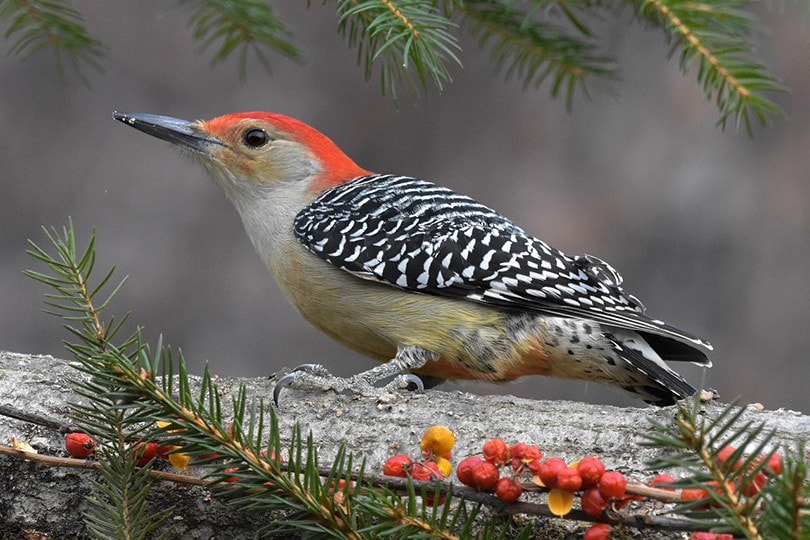
| Population: | 16 million |
| Wingspan: | 15 to 18 inches |
| Weight: | 2 to 3.2 ounces |
| Length: | 9 to 10 inches |
While the red-bellied woodpecker might have “red-bellied” in the name, the truth is that they don’t have much red on their bellies. It’s mostly white, with a faint red tint. There’s far more red on their heads, and they love to visit bird feeders.
Red-bellied woodpeckers prefer to eat from suet bird feeders if you’re trying to attract them to your yard, but in the wild, they primarily eat insects. Other foods that the red-bellied woodpecker loves include fruits, seeds, nuts, eggs, and even the occasional tree frog!
5. Pileated Woodpecker
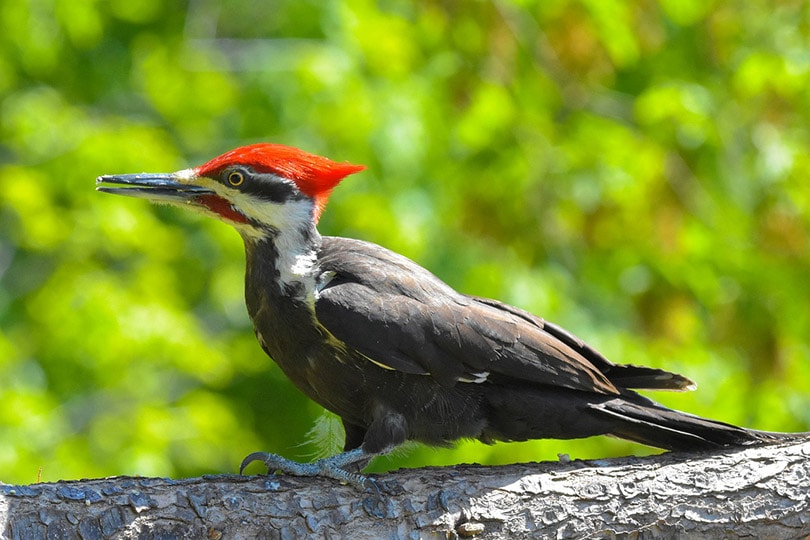
| Population: | 1.9 million |
| Wingspan: | 28 to 30 inches |
| Weight: | 9 to 14 ounces |
| Length: | 16 to 19 inches |
When most people think of a woodpecker, chances are that a pileated woodpecker comes to mind. Cartoon character Woody the Woodpecker is a pileated woodpecker, and they’re the largest type of woodpecker that you can find in Kentucky. That said, they’re hard to spot. They like to hang out deep in mature forests and are far less likely to come to visit feeders in backyards.
Their population numbers are smaller than those of many other woodpeckers, so even if you go out to try to spot them, it can be a bit of a challenge. Still, due to their large size and beautiful red plumage, they’re well worth the trouble.
6. Red-Headed Woodpecker
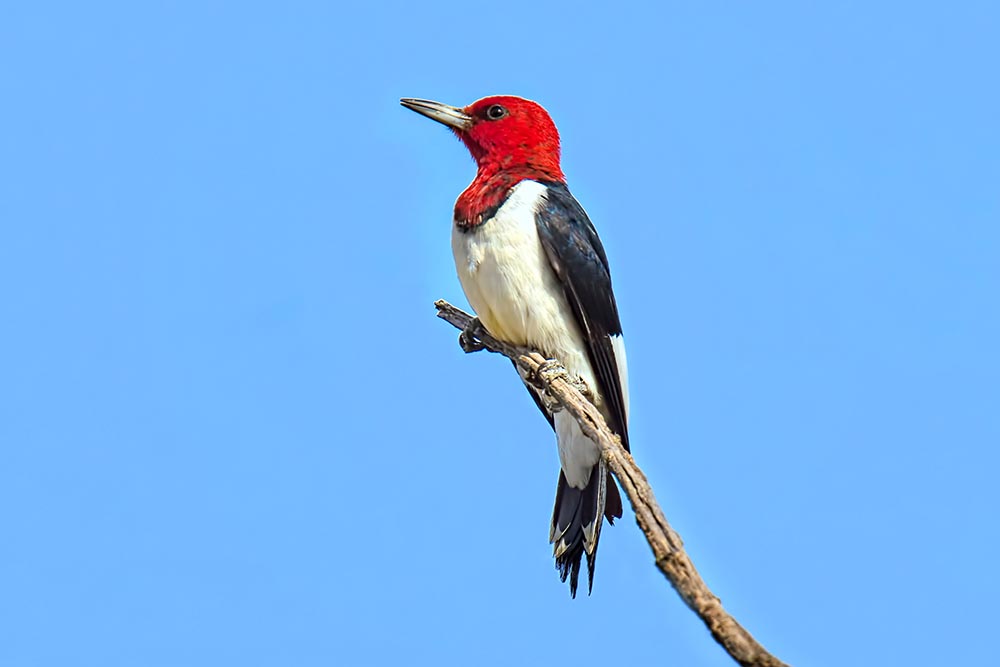
| Population: | 1.2 million |
| Wingspan: | 16 to 17 inches |
| Weight: | 2 to 3.2 ounces |
| Length: | 7.5 to 9.1 ounces |
Some woodpeckers have a bit of red on their head, but the red-headed woodpecker’s entire head is red. This makes them reasonably easy to identify, but they’re also a bit of a challenge to spot. They’re incredibly skittish birds and do a phenomenal job of staying out of sight.
They rarely visit feeders, and they are outstanding at catching flying insects. Making it even more challenging to spot these beautiful birds is the fact that their population numbers are dwindling, so there are not as many of them as other woodpeckers on this list.
So, if you get a chance to spot a red-headed woodpecker, cherish it because it likely won’t happen again any time soon.
7. Yellow-Bellied Sapsucker

| Population: | 14 million |
| Wingspan: | 13.5 to 16 inches |
| Weight: | 1.5 to 2 ounces |
| Length: | 7 to 8.5 inches |
The yellow-bellied sapsucker is the one woodpecker that behaves most like a woodpecker: They drill holes into trees almost exclusively for feeding, making a constant drum the soundtrack of their life.
Yellow-bellied sapsuckers have long tongues that they use to eat sap, and contrary to what many people think, they don’t actually damage trees. The holes they drill aren’t that deep, and an otherwise healthy tree can heal up completely from the damage that they cause.
However, if you do have an ailing tree, a yellow-bellied sapsucker might be able to finish it off. Still, without yellow-bellied sapsuckers, other birds that eat sap and nectar, like hummingbirds, would suffer too!

Tips for Spotting Woodpeckers in Kentucky
If you’re looking to spot a woodpecker in your backyard in Kentucky, you need mature trees. Even woodpeckers that commonly visit birdfeeders only hang out around trees, so without any around, you won’t be able to spot them.
Also, you need mature trees in particular. So, even if you plant a few new trees, it’s going to take a while for woodpeckers to show up. But if you have such trees, you only need to do two things to increase the chances of attracting woodpeckers to your yard.
First, put out suet bird feeders. Other types of bird feeders work too, but suet ones are best. Second, put out a birdbath or two. Woodpeckers need access to both food and water, and the water also attracts flying insects that woodpeckers love to eat.
From there, keep a fresh supply of water and suet available so the woodpeckers can come to rely on the supply. Once they realize that it’s going to stay there, it’s only a matter of time until you have regulars coming to visit your yard and home!

Final Thoughts
There are millions of woodpeckers in the state of Kentucky, and quite a few of them aren’t shy about visiting feeders in your backyard!
Now that you know more about what you’re looking for, all you need to do to spot a woodpecker in the Bluegrass State is to keep an eye out!
See also:
Featured Image Credit: Veronika_Andrews, Pixabay
About the Author Robert Sparks
Robert’s obsession with all things optical started early in life, when his optician father would bring home prototypes for Robert to play with. Nowadays, Robert is dedicated to helping others find the right optics for their needs. His hobbies include astronomy, astrophysics, and model building. Originally from Newark, NJ, he resides in Santa Fe, New Mexico, where the nighttime skies are filled with glittering stars.
Related Articles:
Monocular vs Telescope: Differences Explained (With Pictures)
10 Types of Hummingbirds in Arkansas (With Pictures)
8 Types of Hummingbirds in Nebraska (With Pictures)
5 Types of Hummingbirds in Idaho (With Pictures)
3 Types of Hummingbirds in Mississippi (With Pictures)
8 Types of Hummingbirds in Kansas (With Pictures)
5 Types of Hummingbirds in West Virginia (With Pictures)
5 Types of Hummingbirds in Ohio (With Pictures)
